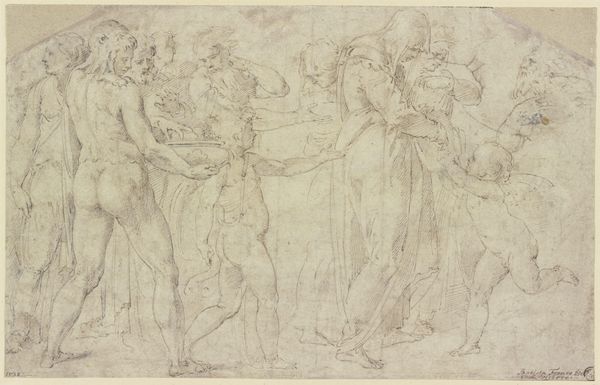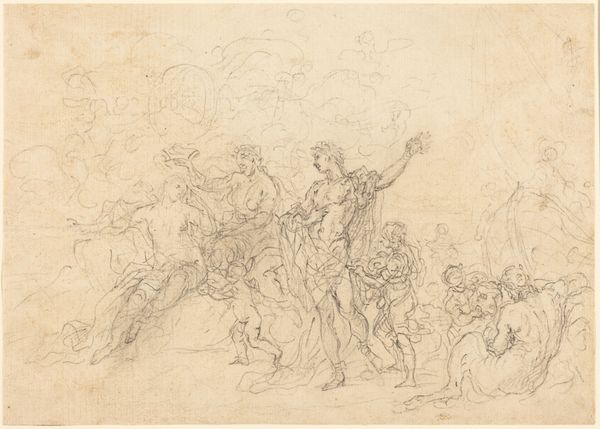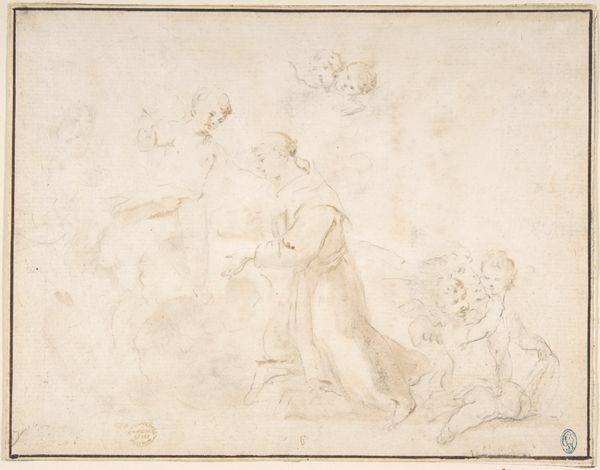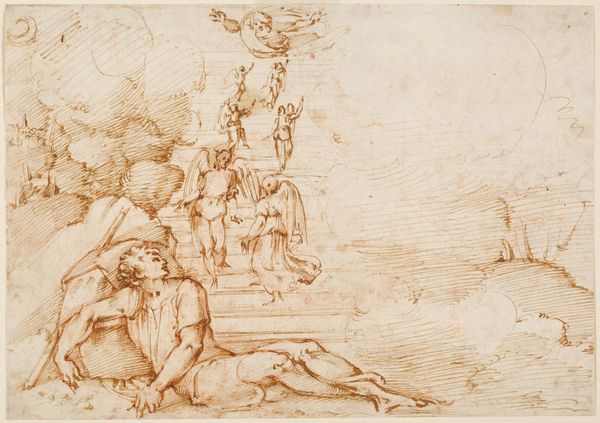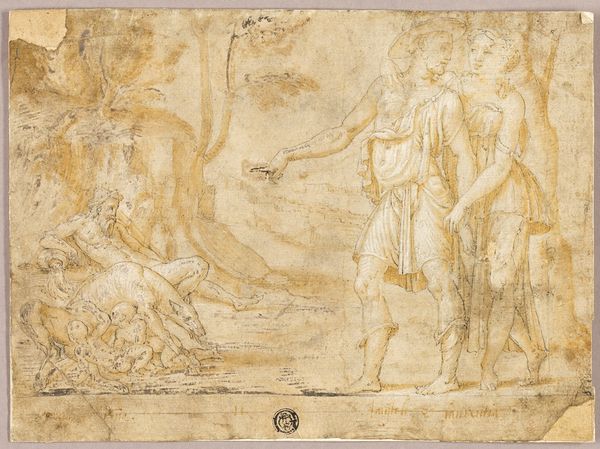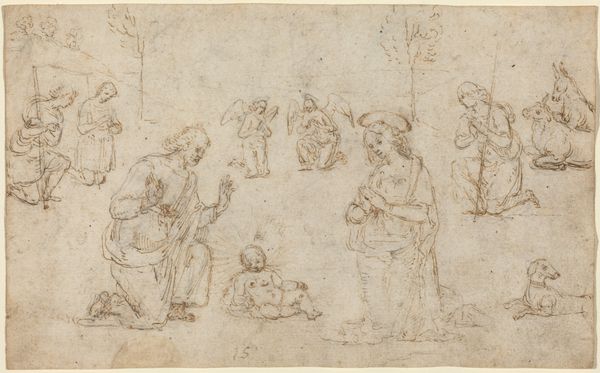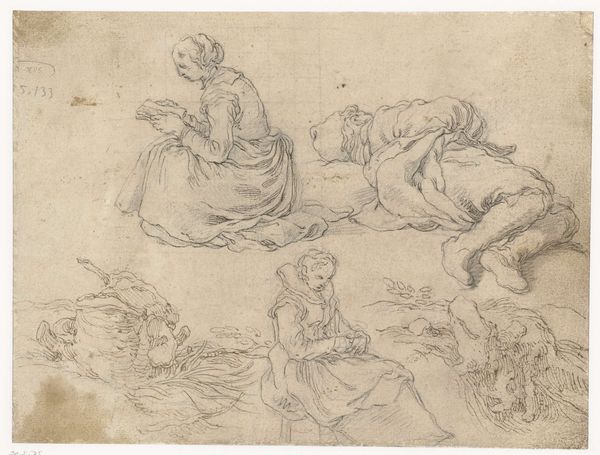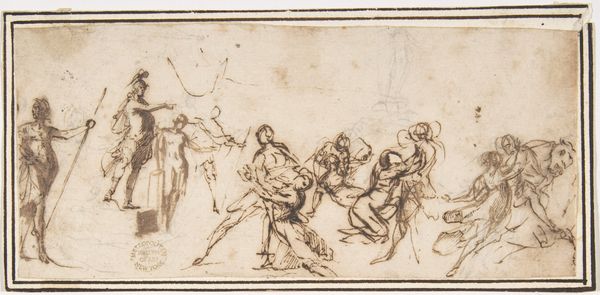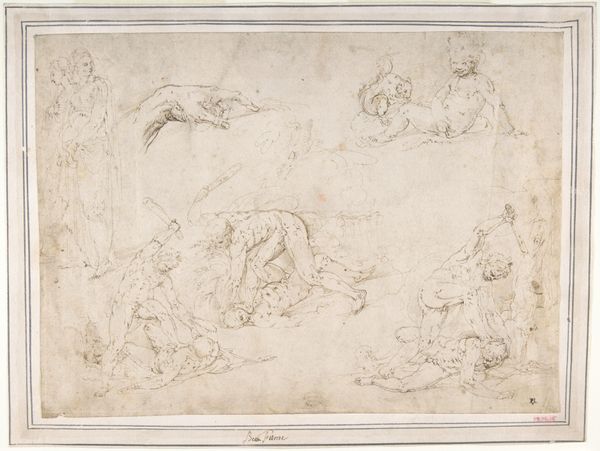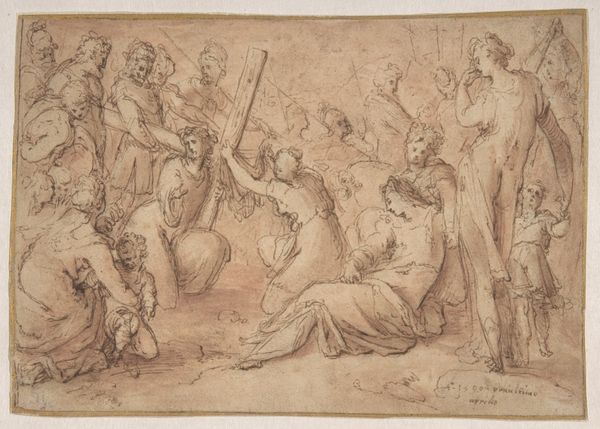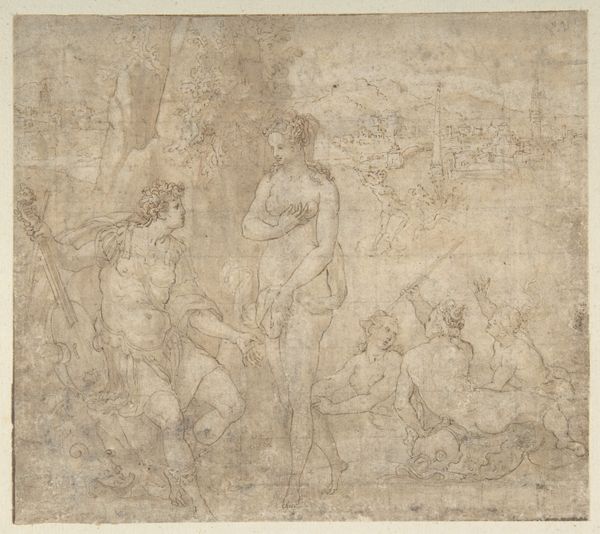
Group of Standing and Seated Female Figures (recto); Costumed Female Figure (verso) 1624 - 1663
0:00
0:00
drawing
#
drawing
#
figuration
#
italian-renaissance
Dimensions: 4-1/8 x 5-9/16 in. (10.4 x 14.1 cm)
Copyright: Public Domain
Curator: This sanguine drawing, done by Francesco Allegrini between 1624 and 1663, is called "Group of Standing and Seated Female Figures (recto); Costumed Female Figure (verso)." Editor: There's something immediately appealing in its lightness. Like figures glimpsed through a mist, sketched memories. The red chalk feels delicate. Curator: Delicate indeed! Sanguine chalk was perfect for rendering flesh tones, adding that breath of life to sketches. Look at how Allegrini layers the strokes. It’s a workshop sketch—you can practically hear the rustle of costumes! He’s exploring arrangements. Editor: The arrangement speaks volumes, especially the seated figures clustered around the standing one. Is it just me, or does it echo ideas of social rank or power structures embedded within Renaissance society? How accessible were these materials, what stories do they tell of labor within his workshop? Curator: Good question! Access to drawing materials and how an artist used them were absolutely part of social meaning, class divisions... But to me, this study exudes something spiritual as well, as Allegrini played with composition for larger narrative painting commissions, potentially religious. What does the labor of creativity *feel* like, at the start of a process? Editor: Well, these aren’t idealized figures; you see his process. He's not afraid to show how making the sketch becomes this sort of labor-- that makes it powerful and challenges the notions of "high art" in Renaissance art that relied on expensive materials, precise execution, and so-called "flawless" representation. Curator: Beautifully said. But beyond technique, do you not get the sense of reverence here? Maybe these sketches hint at Allegrini’s devotion as he was planning out paintings for some church commission. Look how the red ink evokes warm feelings and almost spiritual feelings. Editor: Maybe...or maybe that's how we've been taught to *feel*! It could all come back to how this raw, seemingly insignificant drawing was later deemed worthy by collectors. The way value is assigned shifts our perceptions even now. Curator: Right you are...a good reminder that materials and artistic interpretation are both lenses! Editor: Agreed. A sketch holds history, even without trying to, in every mark, in every revision, and ultimately changes art history through process.
Comments
No comments
Be the first to comment and join the conversation on the ultimate creative platform.

